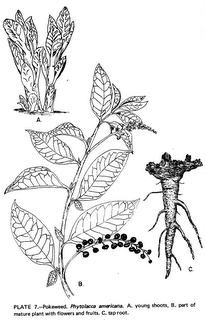Tuesday, February 26, 2008
 Sam's slow-poke poke
Sam's slow-poke pokeIn an earlier entry (Feb. 24) I stated: "we soon might start seeing the pokeweed Earl[Livengood]'s friend Sam Consylman buries in sand each fall."
Well, we won't.
Sam reports that the poke crop he set out in his cold basement in the fall has failed to send up much in the way of shoots for harvesting. Where he had expected to get five pounds a week right now he's barely reaping a pound.
Sam isn't sure why but suspects the lack of a strong cold spell in the fall is responsible. He speculates that the poke needs the cold to snap them into the dormant stage for the rest of the winter.
What little supply of poke Sam does have is earmarked for Farm To City's Winter Harvest program. Sam does have plenty of Jerusalem artichoke, however.
In the fall, Sam digs up pokeweed from his favorite Lancaster County foraging grounds and stores them on two six-foot long shelves in his basement. He stacks them tightly to preserve moisture and waters them daily to "mimic the same way they'd get moisture in the wild."
By January they start to send out edible shoots (the leaves, berries, taproot and older shoots are poisonous) which Sam harvests and usually sells through Earl Livengood and Farm To City. This year, however, no shoots appeared until February, and the crop has been meager.
If you do happen to find Sam's poke, treat it as you would spinach or asparagus. The new growth poke has a bleached appearance because it's not been in the sun; according to Sam, "the wild stuff has a little bitterness because it gets some sun; with what I have you don't need to boil it twice and discard the water" as you would with poke shoots that haven't been coaxed out of the darkness in Sam's cellar.
 Robert's Market Report
Robert's Market Report
